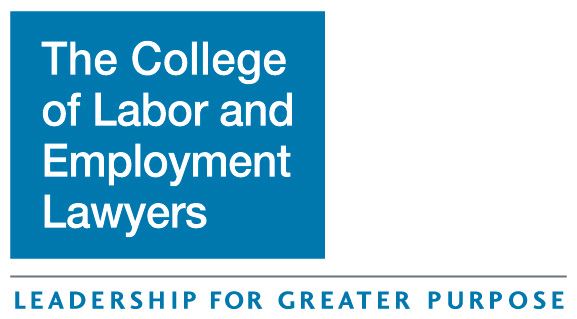When a person is the victim of an illegal act, that person usually has the right to file a lawsuit against the party who they believe violated some law. The person who files such a lawsuit is referred to as a “plaintiff;” the person they sue is called a “defendant;” together, the plaintiff and defendant are referred to as the “parties” to the lawsuit.
However, while plaintiffs have the right to sue, they may not have the money to pursue their claim successfully. Proving that a defendant violated a law, and that they should have to pay for their violation, can be difficult. Therefore, plaintiffs who want to sue successfully often hire an attorney, a person who specializes in this line of work. Attorneys put hours of work into building and strengthening a client’s case, hours of work which they will need to be paid for. If clients cannot pay attorney’s fees up front, attorneys will often waive these fees and instead agree to take a portion of whatever judgment the court orders against the defendant, or a portion of any settlement reached between the parties, or court-ordered attorney’s fees. However, these options place a substantial risk on the attorney’s shoulders. If the attorney loses the case–even if the loss is through no fault of his own–then he would receive no compensation. Additionally, if the judgment amount is relatively small, even a victorious attorney may receive very little compensation for the time he put into building and proving his client’s case. Thus, litigation costs may discourage plaintiffs with solid claims from exercising their legal rights, especially when potential damages awards are small.
The law, recognizing this problem, has provided a solution: plaintiffs with similar claims against the same defendant can consolidate their claims into a single lawsuit. By consolidating claims, the potential damages award of the suit increases greatly while the cost of litigating the case may increase disproportionately. This makes many more suits viable from a cost/benefit perspective. Employment law claims are frequently consolidated in this way.
There are two different ways to consolidate claims: class actions and collective actions. Both improve the ratio of a lawsuit’s benefits to its cost, but there are important differences between them.
Class actions are powerful but complicated. The class action’s power derives from its ability to consolidate claims from large numbers of plaintiffs into a single suit. In the recent case of Wal-Mart v. Dukes, the plaintiffs who brought the suit sought court certification of a class of 1.6 million women who were current or former Wal-Mart employees. In Dukes, the Supreme Court refused to certify the class. Nevertheless, class actions have the potential to bring claims on behalf of large numbers of plaintiffs and generate huge damages awards and settlement amounts.
Class actions consolidate so many plaintiffs and generate such large awards because they have the power to represent class members who do not affirmatively join the suit. In some situations, class members cannot avoid being part of the lawsuit. However, when a class member has a valuable claim at stake, they will usually be able to “opt-out” of the class. They will be notified of the suit and given the opportunity to remover themselves from the class. If they do not follow the instructions for opting out, they become part of the class. The initial plaintiffs in the suit represent the class members, and the resolution of the suit settles each class member’s legal interest.
Because class actions settle legal rights for people who do not affirmatively join the lawsuit, they contain the potential for abuse. Courts police against abuse through the class certification procedure. Before a “putative class action” can become a bona fide class action, the plaintiffs who file the complaint must persuade the judge that class certification is appropriate.
Different courts impose different certification requirements. Federal courts and state courts that follow the federal model require a plaintiff seeking class certification to show (1) “numerosity” (that the class is so large that individual joinder of its members is impractical), (2) “commonality” (that all members of the class share characteristics important to the law allegedly violated), (3) “typicality” (that the plaintiffs brining the suit have similar claims and defenses as class members), and (4) “adequacy” (the ability and motivation of the initial plaintiffs and their attorney to faithfully and competently pursue the rights of class members).
This test applies to all putative class actions in courts following the federal model. However, that model imposes additional requirements on different types of class actions. The type common in employment law, the “23(b)(3) Class,” requires the initial plaintiffs to show that a class action is superior to other types of suit. Also, 23(b)(3) plaintiffs notify all members of the class to enable them to opt out.
Notwithstanding the difficulty of class certification, the class action remains a desirable means of pooling claims because of its power. As noted, it enables a single suit to represent large numbers of plaintiffs and unlocks a larger damages award. Additionally, large class actions apply tremendous pressure on defendants in settlement negotiations.
Collective actions are less powerful and simpler than class actions. A collective action is similar to individual litigation–the main difference is the number of plaintiffs. Every individual whose interests are represented in a collective action must “opt in” to the suit. This means signing and filing a consent form with the court.
The Fair Labor Standards Act (“FLSA”) requires that all minimum wage and overtimeclaims be brought through collective action lawsuits. To obtain conditional certification of a collective action under the FLSA, plaintiffs in the proposed group must be “similarly situated” to the plaintiff(s) who originally brought the suit. This means that all plaintiffs must have suffered from the same type of illegal act or policy of the same defendant. Also, a newer trend in employment law involves filing a “hybrid action,” a single lawsuit that brings federal employment claims as a collective action, and state employment claims as a class action.
If you are not being paid what you are legally owed, you should contact a St. Louis overtime attorney. An attorney may be able to help you, or you and many of your coworkers, receive pay to which you are legally entitled.














